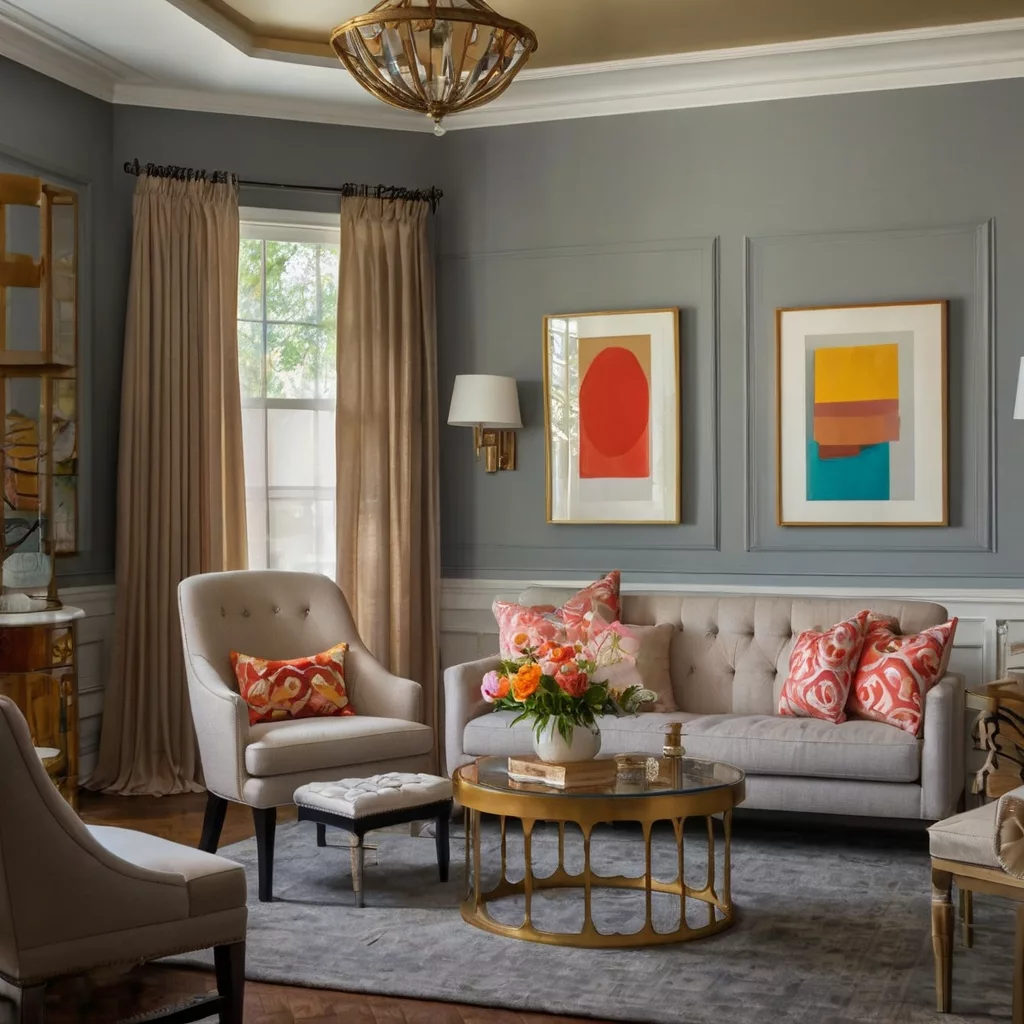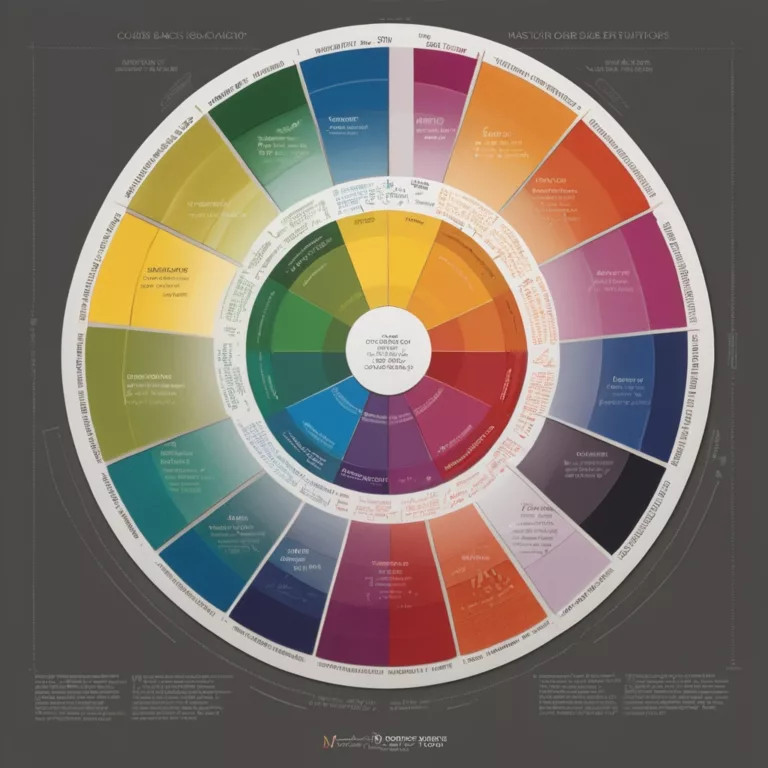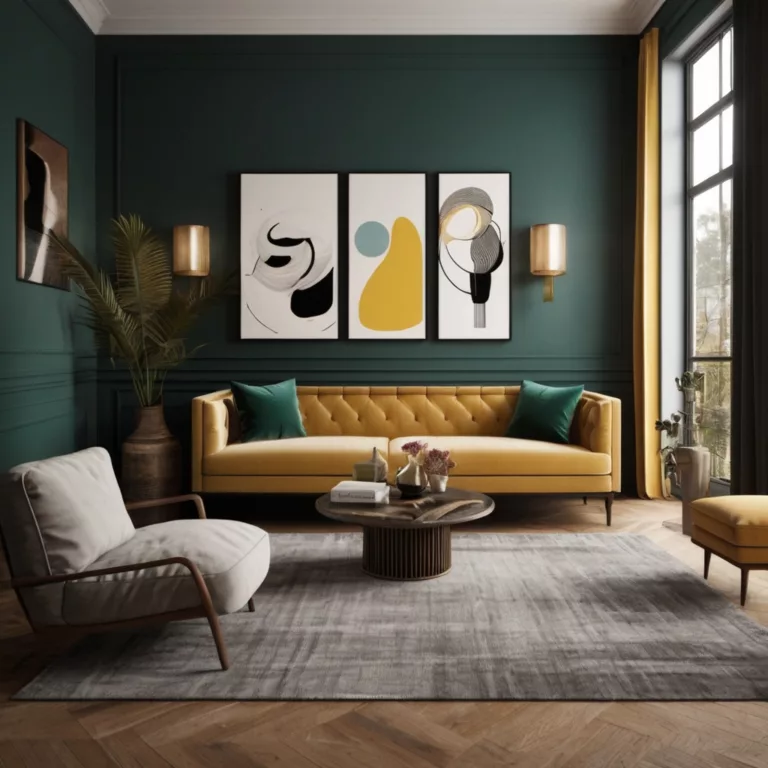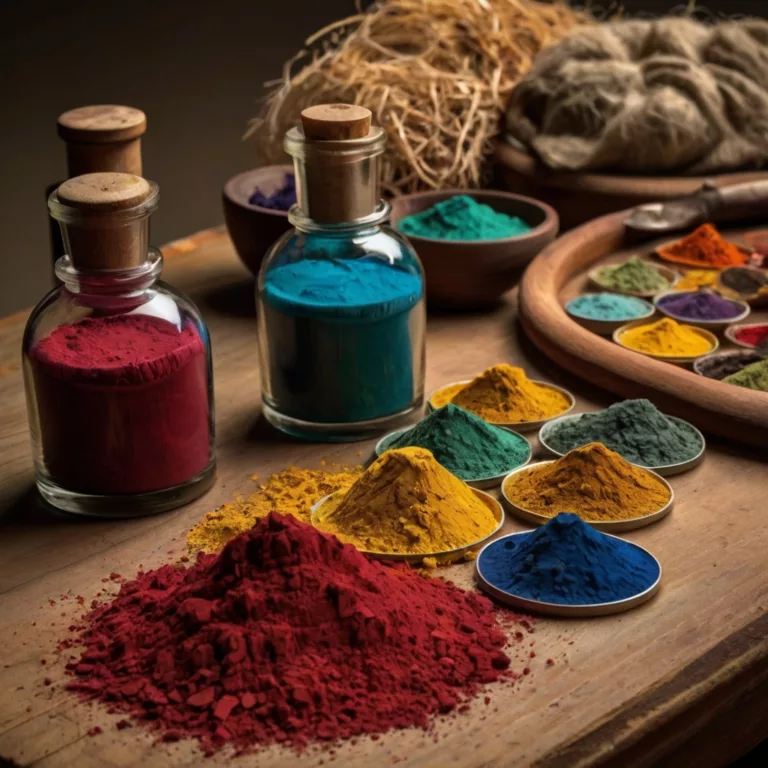Common Color Mistakes in Home Decor & How to Fix Them
Discover the most common color mistakes in home decor and learn expert solutions to fix them. This comprehensive guide helps you avoid color coordination pitfalls and create harmonious, professionally designed spaces.
Introduction: Understanding Color Mistakes in Home Design
Common color mistakes in home decor can undermine even the most thoughtfully planned interior designs. Whether you’re refreshing a single room or renovating your entire home, color choices significantly impact the overall aesthetic, mood, and functionality of your space. Many homeowners and even some designers regularly fall into predictable color traps that can make rooms feel unbalanced, uncomfortable, or visually confusing.
This comprehensive guide explores the most common color mistakes in home decor and provides practical, expert-backed solutions to correct them. By understanding these pitfalls and implementing targeted fixes, you’ll gain the confidence to create cohesive, harmonious spaces that reflect your personal style while adhering to fundamental design principles.
Fundamental Color Mistakes: The Basics Gone Wrong
Mistake #1: Ignoring Undertones in Color Selection
One of the most prevalent common color mistakes occurs when homeowners fail to recognize and account for undertones—the subtle hues that exist within seemingly simple colors.
How this mistake manifests:
- Whites that clash because one has blue undertones while another has yellow undertones
- Grays that suddenly look purple or green when installed
- Beiges that appear pink or orange in certain lighting
- Wood finishes that compete rather than complement each other
How to fix this common color mistake:
- Examine colors in both natural and artificial lighting conditions
- Place potential colors next to fixed elements to check for undertone compatibility
- Use large color samples (at least 12″x12″) rather than tiny swatches
- Group samples by warm (yellow, red, orange undertones) or cool (blue, green, purple undertones) categories
- Create a consistent undertone strategy throughout connected spaces
Expert tip: “The secret to avoiding undertone conflicts is to view colors not in isolation but in relation to every other element in the room,” says interior designer Sarah Richardson. “Always test colors against your flooring, cabinetry, and countertops before committing.”
Mistake #2: Selecting Paint Colors First in the Design Process
Another fundamental common color mistake is beginning the design process by selecting wall colors before other elements.
How this mistake manifests:
- Difficulty finding furniture and fabrics that coordinate with highly specific wall colors
- Rooms that feel disjointed because the paint doesn’t harmonize with existing architectural elements
- Design limitations imposed by committing to wall colors prematurely
How to fix this common color mistake:
- Reverse your design sequence—select major furniture pieces, rugs, or fabrics first
- Draw color inspiration from fixed elements or investment pieces
- Create a comprehensive color board including all elements before selecting paint
- Use paint’s versatility (available in virtually unlimited colors) to your advantage
- Work with the architectural features rather than against them
Designer insight: “Paint offers thousands of options and can be precisely matched, while fabrics and furnishings offer fewer alternatives. Always select your more limited options first, then choose paint colors that enhance those selections,” advises interior designer Shea McGee.
Color Coordination Mistakes: When Good Colors Don’t Work Together
Mistake #3: Using Too Many Colors Without a Cohesive Strategy
Incorporating multiple colors without a unifying approach is a common color mistake that creates visual chaos.
How this mistake manifests:
- Rooms that feel busy and lack visual focus
- Spaces where the eye doesn’t know where to rest
- Interiors that seem amateur rather than intentionally designed
- Areas that feel disconnected from the rest of the home
How to fix this common color mistake:
- Implement the 60-30-10 rule (60% dominant color, 30% secondary color, 10% accent color)
- Create a limited color palette of 3-5 colors for each room
- Use a color wheel to select harmonious combinations (complementary, analogous, or triadic)
- Thread a consistent accent color throughout different spaces
- Vary the intensity of your chosen colors rather than introducing new ones
Professional perspective: “A successful interior tells a cohesive color story. Limit your palette and repeat colors in different proportions throughout the space to create rhythm and continuity,” recommends color consultant Maria Killam.
Mistake #4: Creating Inadvertent Color Temperature Conflicts
Mixing warm and cool colors without intention is a subtle common color mistake that can create uncomfortable visual tension.
How this mistake manifests:
- Spaces that feel “off” without an obvious reason
- Rooms where certain elements seem to clash despite being technically coordinated
- Areas that lack the intended emotional response (relaxing, energizing, etc.)
How to fix this common color mistake:
- Decide on a predominantly warm or cool color direction for each space
- Use temperature-neutral colors (certain grays, greens, or purples) as bridges
- Ensure fixed elements (flooring, countertops) align with your temperature strategy
- Consider the natural light exposure (north-facing rooms benefit from warmer colors)
- Balance temperature extremes with neutralizing elements
Expert advice: “Color temperature is often the missing piece in troubleshooting rooms that don’t feel quite right. A predominantly warm room with one jarringly cool element will never feel resolved, no matter how carefully you’ve coordinated other aspects,” explains color psychologist Angela Wright.
Room-Specific Color Mistakes: Spatial Challenges
Mistake #5: Disregarding Room Size When Selecting Colors
Applying colors without considering spatial dimensions is a common color mistake that can make rooms feel awkwardly proportioned.
How this mistake manifests:
- Small rooms that feel claustrophobic with dark colors
- Large rooms that feel cavernous and unwelcoming with light colors on all surfaces
- Spaces where architectural features are either lost or overemphasized
How to fix this common color mistake:
- Use lighter colors to visually expand small spaces
- Apply darker or warmer colors to create intimacy in oversized rooms
- Consider color placement strategically—darker colors lower a ceiling while lighter colors raise it
- Use color to highlight architectural assets and downplay flaws
- Create intentional color zones in open-concept spaces
Designer technique: “In smaller spaces, consider using the same color for walls and trim but in different finishes—matte for walls and semi-gloss for trim. This creates subtle dimension without breaking up the space with contrasting colors,” suggests designer Emily Henderson.
Mistake #6: Neglecting Lighting’s Impact on Color Perception
Failing to account for how different lighting affects color appearance is a critical common color mistake.
How this mistake manifests:
- Colors that look dramatically different from what was expected once installed
- Rooms that look appealing during the day but unappealing at night
- Spaces where expensive finishes don’t showcase their true beauty
How to fix this common color mistake:
- Test colors under all lighting conditions that will affect the space
- Consider the color temperature of your light sources (measured in Kelvins)
- Install lighting with high color rendering index (CRI) values for true color representation
- Use multiple light sources at varying heights to create balanced illumination
- Adjust wall colors to compensate for problematic light (e.g., counteract greenish fluorescent lighting with slightly warmer wall tones)
Lighting designer perspective: “The interaction between light and color is inseparable. The same paint color can appear dramatically different under cool LED lighting versus warm incandescent bulbs. Always test your colors under the exact lighting conditions that will exist in the space,” advises lighting specialist Anne Kustner Haser.
Color Application Mistakes: Technical Errors
Mistake #7: Improper Color Balance and Distribution
Creating unbalanced visual weight through poor color distribution is a common color mistake in many homes.
How this mistake manifests:
- Rooms that feel bottom or top-heavy
- Spaces where certain areas draw disproportionate attention
- Interiors that lack cohesion between vertical and horizontal surfaces
How to fix this common color mistake:
- Create color connections between floors, walls, and ceilings
- Distribute your accent colors throughout the space at varying heights
- Balance bold colors with adequate neutral space for visual relief
- Consider the visual planes created by architecture when distributing color
- Use the principle of color gravity (generally darker below, lighter above)
Color theory application: “Think of color distribution as creating visual pathways throughout your space. Your eye should travel comfortably around the room, guided by intentional color placement rather than bouncing erratically between disconnected color elements,” explains interior architect Thomas Pheasant.
Mistake #8: Misusing Accent Walls
Implementing accent walls without strategic purpose is a common color mistake that can backfire aesthetically.
How this mistake manifests:
- Accent walls that feel random or disconnected from the overall design
- Highlighted walls that emphasize problematic architectural features
- Spaces where the accent wall competes with rather than complements the room’s focal points
How to fix this common color mistake:
- Select logical walls for emphasis (fireplace walls, headboard walls, or walls with significant architectural interest)
- Ensure the accent color relates to other elements in the room
- Consider alternatives to paint for accent walls (wallpaper, wood paneling, stone)
- Use color to correct spatial challenges rather than creating new ones
- Make sure the accent wall serves a specific design purpose
Designer insight: “An accent wall should never exist solely for the sake of having an accent wall. It should highlight architecture, define a functional area, or enhance a natural focal point. When in doubt, a cohesive color approach often creates more sophisticated results than a singular statement wall,” advises interior designer Nate Berkus.
Color Selection Mistakes: Choosing the Wrong Colors
Mistake #9: Following Trends Without Considering Longevity
Adopting trendy colors without consideration for long-term appeal is a common color mistake that leads to frequent and costly updates.
How this mistake manifests:
- Spaces that quickly feel dated as color trends shift
- Rooms that don’t reflect the homeowner’s authentic preferences
- Design choices driven by social media rather than personal connection
How to fix this common color mistake:
- Reserve trendy colors for easily changeable elements (accessories, smaller furniture pieces)
- Use timeless colors for investment pieces and permanent features
- Consider the historical longevity of certain colors (navy blue, forest green, and warm neutrals have endured for centuries)
- Test your emotional response to colors after the initial excitement wears off
- Create a core neutral palette supplemented with trendier accent colors
Industry perspective: “True color satisfaction comes from selecting hues that resonate with you personally rather than those simply trending on Pinterest. Ask yourself if you’d still love that color even if no one else did—that’s the test for authentic color selection,” suggests color trend forecaster Leatrice Eiseman.
Mistake #10: Disregarding Regional and Architectural Context
Selecting colors that conflict with architectural style or regional context is a common color mistake in home design.
How this mistake manifests:
- Mediterranean color schemes applied to New England Colonial homes
- Ultra-modern color palettes forced onto historic properties
- Colors that feel disconnected from the surrounding natural environment
How to fix this common color mistake:
- Research historically appropriate color schemes for your home’s architectural style
- Consider your region’s light quality, which affects how colors are perceived
- Draw inspiration from the surrounding landscape for a connected feel
- Create contemporary interpretations of traditional color schemes rather than complete departures
- Balance architectural authenticity with personal expression
Architectural color specialist perspective: “The most successful color schemes acknowledge a home’s architectural DNA while sensitively updating it for contemporary living. Colors should feel like they belong to both the structure and its inhabitants,” explains architectural colorist Amy Wax.
Psychological Color Mistakes: Emotional Impacts
Mistake #11: Ignoring Color Psychology in Functional Spaces
Overlooking how colors affect behavior and mood is a common color mistake that impacts daily living.
How this mistake manifests:
- Bedrooms painted in stimulating colors that interfere with sleep
- Home offices in colors that reduce productivity or focus
- Dining areas in unappetizing color schemes
- Exercise spaces in demotivating colors
How to fix this common color mistake:
- Select colors based on the primary function of each space
- Consider blue and green tones for spaces requiring concentration and calm
- Use warm colors like reds and oranges in social spaces to stimulate conversation
- Implement energizing yellows in exercise areas or morning rooms
- Create color transitions between spaces with different functions
Color psychology research: “Our neurological responses to color are partly innate and partly conditioned, but they significantly impact our behavior in spaces. A bedroom painted bright red may increase heart rate and make sleep more difficult, regardless of how much you aesthetically like the color,” notes environmental psychologist Dr. Sally Augustin.
Mistake #12: Creating Color Schemes That Don’t Support Well-Being
Developing color environments that work against psychological comfort is a common color mistake in residential design.
How this mistake manifests:
- Overwhelming color schemes that create visual stress
- Spaces that feel emotionally disconnected from their inhabitants
- Rooms that evoke unintended emotional responses
- Areas that feel perpetually uncomfortable despite adequate furnishings
How to fix this common color mistake:
- Incorporate biophilic color principles (colors found in nature) for inherent comfort
- Balance stimulating colors with adequate neutral space
- Create color consistency in transitions between rooms
- Consider personal color associations and cultural backgrounds
- Allow for personalization within a cohesive framework
Wellness design expert insight: “Color is one of our most powerful tools for creating environments that support mental and physical health. The most successful residential color schemes create a sense of both stimulation and refuge, with careful attention to intensity and placement,” advises design psychologist Toby Israel.
Cultural Color Mistakes: Contextual Considerations
Mistake #13: Overlooking Cultural Significance of Colors
Disregarding cultural associations with certain colors is a common color mistake, especially in diverse households.
How this mistake manifests:
- Using colors with negative associations for certain family members
- Creating spaces that feel culturally disconnected for international clients
- Missing opportunities to incorporate meaningful cultural color traditions
How to fix this common color mistake:
- Research the cultural significance of colors for all household members
- Create fusion color palettes that honor diverse backgrounds
- Use color to incorporate cultural heritage in contemporary ways
- Consider global color symbolism for spaces frequently used for entertaining
- Balance cultural specificity with universal color principles
Cross-cultural design perspective: “Colors carry powerful cultural meanings that operate on a subconscious level. A color considered auspicious in one culture may signify mourning in another. The most inclusive homes acknowledge these differences and create color environments that respect everyone’s associations,” explains global interior designer Kelly Hoppen.
Mistake #14: Failing to Consider Generational Color Preferences
Not accounting for how different age groups respond to colors is a common color mistake in multigenerational homes.
How this mistake manifests:
- Color schemes that feel consistently uncomfortable for certain family members
- Spaces that skew too juvenile or too mature for their primary users
- Missed opportunities for creating age-appropriate environments
How to fix this common color mistake:
- Create age-adaptable color schemes in shared spaces
- Use color to differentiate areas for different generations
- Incorporate colors with cross-generational appeal in communal zones
- Consider how color perception changes with age (older adults generally prefer higher contrast and warmer colors)
- Create flexible color frameworks that can evolve as family needs change
Inclusive design specialist insight: “Universal design principles apply to color just as they do to physical accessibility. The most successful multigenerational homes use color strategically to support visual acuity, wayfinding, and emotional comfort for all ages,” advises inclusive design expert Sinéad Burke.
Technical Implementation Mistakes: Application Issues
Mistake #15: Improper Paint Finish Selection
Selecting inappropriate paint finishes for specific applications is a common color mistake that affects both aesthetics and functionality.
How this mistake manifests:
- Highly visible surface imperfections due to wrong finish choices
- Premature wear in high-traffic areas with inadequate durability
- Excessive glare or flatness that undermines color appearance
- Finishes that detract from rather than enhance architectural details
How to fix this common color mistake:
- Match paint finish to the surface condition (flatter finishes hide imperfections)
- Consider room function when selecting durability level (washable finishes for kitchens and bathrooms)
- Use finish strategically (matte for walls, semi-gloss for trim to create subtle contrast)
- Test finishes under actual lighting conditions before application
- Create intentional finish transitions for architectural emphasis
Paint specialist recommendation: “People often focus exclusively on color while treating finish as an afterthought, but the same color in different finishes can look dramatically different. The interaction between color, light, and finish is what creates the final visual impact,” explains paint chemist Lauren Pressey.
Mistake #16: Poor Color Transitions Between Spaces
Creating jarring color changes between connected spaces is a common color mistake in open floor plans.
How this mistake manifests:
- Abrupt color stops that create visual disconnection
- Open concept homes that feel like a patchwork of competing colors
- Transitions that draw attention to themselves rather than creating flow
How to fix this common color mistake:
- Use architectural transitions (doorways, archways, columns) as natural color break points
- Create color stories that flow logically from space to space
- Consider sightlines when planning color placement
- Use consistent neutral colors for transitional spaces
- Implement color strategies like gradual intensity shifts or complementary schemes
Architectural perspective: “In contemporary homes with fewer walls and doors, color becomes the primary means of defining spaces. Successful transitions require thinking of your home’s color plan as a cohesive journey rather than a series of isolated decisions,” advises architect Barbara Barry.
DIY Color Correction: Fixing Mistakes Without Starting Over
Cost-Effective Solutions for Common Color Mistakes
When complete renovation isn’t practical, these approaches can remedy common color mistakes:
For undertone conflicts:
- Introduce bridging elements that contain both competing undertones
- Use metallic accents to neutralize undertone clashes
- Add textural elements that distract from minor undertone issues
- Implement strategic lighting to minimize problematic undertones
- Use art and accessories in harmonizing colors
For problematic wall colors:
- Add large tapestries or art pieces to break up overwhelming colors
- Install temporary wallpaper over problematic paint
- Use strategic furniture placement to cover the most troublesome areas
- Implement color correction through textiles and accessories
- Consider color-washing techniques to modify existing colors
For color balance issues:
- Rearrange furniture to redistribute color weight
- Add area rugs to anchor or balance color distribution
- Install window treatments that complement or counterbalance problematic colors
- Use mirrors to reflect and visually redistribute colors
- Add plants to introduce natural color mediation
Interior stylist technique: “When working with existing colors that can’t be changed, I focus on creating intentional distractions through texture, pattern, and strategic decor placement. The eye naturally follows strong design elements, so creating new focal points can minimize attention to problematic colors,” explains interior stylist Emily Henderson.
Professional Intervention: When to Call in the Experts
Recognizing When Color Mistakes Require Professional Help
Some common color mistakes benefit from professional intervention:
Consider hiring a color consultant when:
- Multiple correction attempts haven’t resolved persistent color issues
- You’re dealing with complicated open floor plans requiring cohesive solutions
- Fixed elements like flooring and cabinetry create complex color coordination challenges
- Historical properties require specialized color knowledge
- Color selection causes significant household disagreement
What color professionals offer:
- Objective assessment of existing color challenges
- Technical knowledge of color theory and application
- Access to professional-grade samples and resources
- Computer visualization of potential solutions
- Experience with similar color correction scenarios
Return on investment: “Professional color consultation typically represents less than 5% of a renovation budget but can prevent costly mistakes that require significant rework. For homeowners struggling with color confidence, this expertise often provides the highest value-to-cost ratio in the design process,” notes interior economist Jennifer McInnis.
Psychology of Color Confidence: Overcoming Color Anxiety
Breaking the Cycle of Color Indecision
Fear of making common color mistakes often leads to design paralysis:
How color anxiety manifests:
- Perpetually postponed painting projects
- Excessive collection of unused paint samples
- Defaulting to white or beige regardless of preference
- Copying others’ color schemes without personalization
- Frequent repainting due to dissatisfaction
Strategies for building color confidence:
- Start with small, low-risk color projects
- Create physical color boards to visualize combinations
- Practice articulating what works and doesn’t work in colors you observe
- Study spaces you find appealing and identify common color themes
- Develop your personal color story based on clothing preferences and favorite objects
Color confidence coaching: “The ability to select colors confidently comes from understanding your authentic preferences and learning some basic principles. Most people actually know what colors they love—they just need permission to trust those instincts,” advises color confidence coach Laura Guido-Clark.
Conclusion: Transforming Color Mistakes into Design Opportunities
Common color mistakes in home decor present valuable learning opportunities for creating more intentional, harmonious spaces. By understanding the foundational principles behind color selection, coordination, and application, homeowners can develop confidence in creating environments that feel both personally meaningful and aesthetically resolved.
Remember that even professional designers occasionally make color mistakes—the difference lies in their ability to diagnose and correct these issues systematically. By approaching color challenges as puzzles to solve rather than failures to avoid, you’ll develop greater color literacy and confidence in your home design decisions.
Whether you’re addressing existing color problems or planning new projects, the principles outlined in this guide provide a framework for more successful color implementation. From technical aspects like undertone coordination to psychological considerations like emotional response, thoughtful color selection transforms living spaces into environments that truly enhance daily life.
Resources for Continued Color Education
Tools for Avoiding Common Color Mistakes
For readers seeking to deepen their understanding of color in home decor, these resources provide valuable guidance:
Educational resources:
- Color theory courses for interior applications
- Paint manufacturer color visualization tools
- Interior design books focused on residential color application
- Color psychology research applicable to home environments
- Historical color studies for period-appropriate selections
Practical tools:
- Professional-grade color fans and systems
- Light meters for understanding illumination levels
- Digital color measurement devices
- Large-format sample boards for accurate testing
- Color journals for tracking successful combinations
By combining technical knowledge with personal color preferences, homeowners can avoid common color mistakes while creating spaces that authentically reflect their taste, support their activities, and enhance their well-being.
Art11deco







